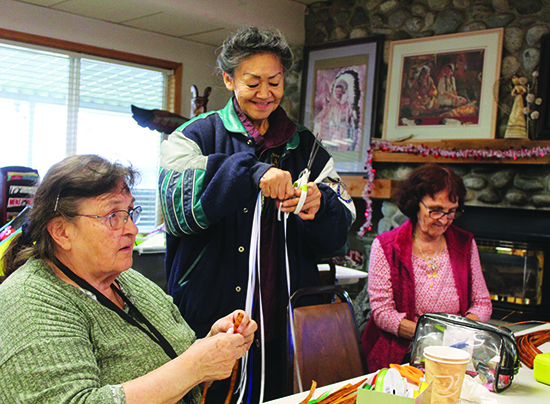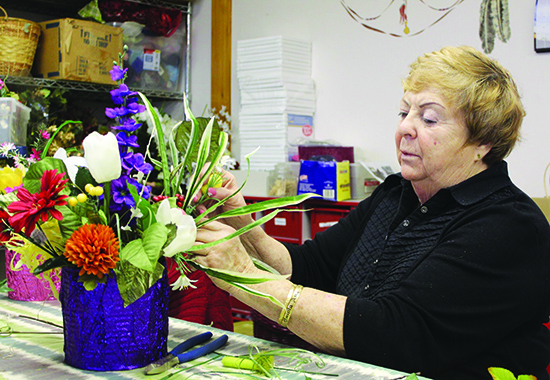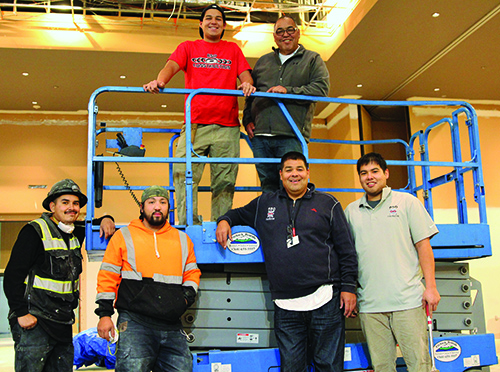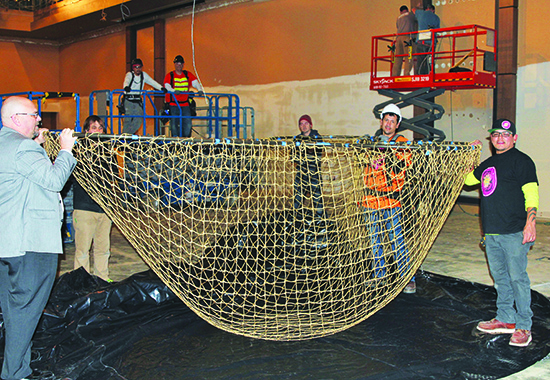By Kalvin Valdillez, Tulalip News
Honorary Tulalip Tribal member, Carol Kapua, has been conducting an arts and crafts class for the Tulalip Elders once a week, for nearly thirty years. Currently, a dedicated group of ladies joins her every Thursday between the hours 10:00 a.m. and 2:00 p.m. to create art projects for the homebound elders of the community. The ladies also remain consistently busy throughout the course of the year making flower arrangements for various occasions, including luncheons, birthings and funerals.
“I’ve spent a lot of time out here since I was in high school. Tulalip is like a second home to me,” says Carol. “I started when we were in the old Tribal building, it was called ‘The Peoples Room.’ Since then, it’s been an ongoing thing and it’s been a really nice outing for some people who would never get out of the house otherwise.”
Carol makes sure to give her students plenty of time to complete their crafts and plans projects months in advance. Currently, the class is already preparing for Halloween and Christmas by crafting string lights out of water bottle caps. The ladies are also creating personal snowmen out of glass bottles.
“For every holiday, the people who can’t leave their home, we make them an ornament. This year they are going to get snowmen made from recycled bottles with golf balls for heads,” says Carol. “It’s just another way of recycling. All the jars are different shapes and sizes so a lot of the snowmen are unique to each person, but all of them will have a hat, scarf and buttons down the front when we’re finished.
“We have also been collecting bottle caps for Christmas and Halloween lights,” she continues. “We glue two caps together and cut a hole between them to place the lights in. There are fifty lights on a strand and two caps per light, so that’s one-hundred caps per strand. People have been really nice about collecting and dropping them off and we will happily continue to accept them until we have enough to complete the project.”
The classes are far more than just arts and crafts to these ladies. They use this time as an opportunity to create memories and share laughter with one another during the course of each four-hour class. Many of the ladies, including Carol, also participate in traditional cedar basket weaving gatherings held at the Senior Center on Tuesdays from 10:00 a.m. and 2:00 p.m.
“We have fun. You can probably hear us a long ways away,” expresses Tulalip Elder and devoted crafter, Virginia Carpenter. “We enjoy making things for our homebound elders. Last year we did Christmas cards; we also do wreaths. We make the centerpieces for the tables at the yearly Elder’s Luncheon, one time we did a beach theme with driftwood and canoes. We do flower arrangements for funerals too, a lot of people donate baskets, we’re thankful for all the donations. Carol is our fearless leader, she teaches us everything we know. She’s done a lot for our elders.”
“These are some fun ladies who I’m proud to call my friends,” Carol expresses. “I think we all look forward to every Thursday. When doing this, often times you’re able to put a smile on somebody’s face because they’re getting something personal. It also puts a smile on our faces because it feels very rewarding to do things for other people. We like to give back.”
For further details, please contact the Tulalip Senior Center at (360) 716-4684.



















